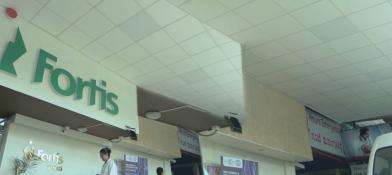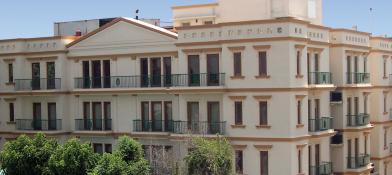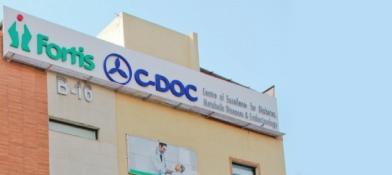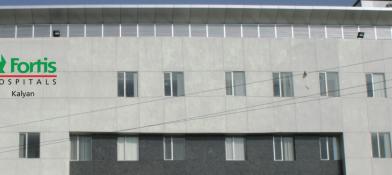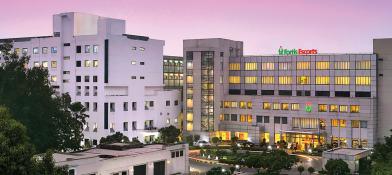Arm Lift (Brachioplasty): Purpose, Procedure & Recovery
An arm lift, known medically as a brachioplasty, is a surgical body contouring procedure designed to address sagging, loose skin on the upper arms, a condition often referred to as bat wings. This procedure reshapes the underside of the upper arm, from the armpit to the elbow, by removing excess skin and fat, resulting in a smoother, firmer, and more toned appearance. An arm lift is an ideal solution for individuals who are left with significant skin laxity due to major weight loss, the natural aging process, or genetics, and which cannot be corrected by exercise alone.
While exercise can strengthen and improve the underlying muscle tone, it cannot tighten skin that has lost its elasticity. A brachioplasty is the definitive procedure to correct this concern, helping patients feel more confident in sleeveless clothing and restoring a more youthful proportion to their arms and overall physique.
What is an Arm Lift (Brachioplasty)?
A brachioplasty is a cosmetic and reconstructive surgical procedure focused on the upper arms. The primary goal is to excise (cut away) redundant skin and, in many cases, to remove localized pockets of excess fat using liposuction. This combination of tissue removal and tightening creates a significantly improved contour. The success of the procedure hinges on the surgeon's ability to create a desirable shape while placing the resulting scar in the most inconspicuous location possible.
The specific surgical technique used will be tailored to your unique anatomy and the extent of correction required. The main variations are defined by the type and length of the incision:
- Minimal Incision / Limited Incision Arm Lift: This technique is suitable for patients with a small amount of loose skin located near the armpit. The surgeon makes a small, crescent-shaped incision hidden within the natural crease of the armpit. Through this incision, a limited amount of skin is removed and the remaining skin is tightened. This approach is less common as it can only address minimal laxity.
- Standard (Traditional) Brachioplasty: This is the most common and effective technique for the majority of patients. The surgeon makes an incision along the inner aspect of the upper arm, typically running from the armpit to just above the elbow. This long incision allows the surgeon to remove a significant ellipse of skin and fat, effectively redraping the skin for a dramatically tighter and smoother contour. The scar is strategically placed so that it is not visible from the front or the back when the arms are by the side.
- Extended Brachioplasty: This technique is reserved for patients, often those who have undergone massive weight loss (e.g., after bariatric surgery), who have extensive skin laxity that continues from the upper arm onto the side of the chest wall. The incision for an extended brachioplasty follows the path of a standard arm lift but then continues down the side of the chest to remove the excess rolls of skin in that area as well.
In almost all cases, liposuction is performed in conjunction with the skin excision. Liposuction helps to remove excess fat deposits and sculpt the arm for a more refined and aesthetically pleasing final contour.
When is an Arm Lift Recommended? (Ideal Candidacy)
An arm lift is a highly effective procedure, but it is essential to have a clear understanding of who makes an ideal candidate. A consultation with a board-certified plastic surgeon is the only way to determine your suitability. Generally, you may be a good candidate if:
- You have significant upper arm skin laxity: The primary indication is loose, sagging, or crepe-like skin that hangs down when you lift your arms.
- Your weight is stable: You should be at or near your ideal body weight and have maintained it for at least six months. An arm lift is a body contouring procedure, not a weight loss surgery. Significant weight fluctuations after the procedure can compromise the results.
- You are in good overall health: You should not have any active medical conditions that could impair healing or increase surgical risk.
- You are a non-smoker: Smoking severely compromises blood flow, which can lead to major wound healing complications, skin death (necrosis), and poor scarring. You must be willing to quit smoking for at least four to six weeks before and after the surgery.
- You have realistic expectations: It is crucial to understand that a brachioplasty will result in a permanent scar. The trade-off for a more toned arm contour is a visible scar. A good candidate understands and accepts this reality.
Arm Lift vs. Liposuction Alone
It is important to differentiate between patients who need an arm lift and those who can be treated with liposuction alone.
- Liposuction is ideal for: Younger patients with good skin elasticity who have excess fat deposits but minimal to no skin sagging. Liposuction removes the fat, and the elastic skin retracts smoothly over the new, slimmer contour.
- An arm lift is necessary for: Patients who have poor skin elasticity and significant excess skin. In these cases, removing fat with liposuction alone would leave the skin even more deflated and saggy. The arm lift is required to remove this redundant skin.
Understanding the Causes of Sagging Arms
The development of sagging skin on the upper arms is typically due to a combination of factors:
- Significant Weight Loss: When you gain a large amount of weight, your skin stretches to accommodate the increased volume. After significant weight loss, particularly rapid loss after bariatric surgery, the skin often lacks the elasticity to shrink back to its former size, leaving behind loose, hanging folds.
- The Aging Process: As we age, our bodies produce less collagen and elastin, the two key proteins that give skin its firmness, structure, and elasticity. The skin becomes thinner, less resilient, and more susceptible to the effects of gravity, leading to sagging.
- Genetics: Your genetic makeup plays a significant role in determining your skin's elasticity and your predisposition to storing fat in certain areas, including the upper arms.
Risk Factors & When to Consider Surgery
You should consider consulting a plastic surgeon if the appearance of your upper arms is a source of significant self-consciousness. This may manifest as:
- Avoiding sleeveless or short-sleeved clothing, even in hot weather.
- Feeling that the size and shape of your arms are disproportionate to the rest of your body.
- Experiencing skin irritation or rashes in the folds of hanging skin.
- Feeling that your arms still look large and untoned despite being physically fit.
A consultation is the first step to understanding your options and determining if a brachioplasty can help you achieve your aesthetic goals.
Our Specialists
Choosing a qualified, board-certified plastic surgeon is the most important decision you will make in your surgical journey. Our team consists of highly experienced and skilled surgeons dedicated to aesthetic excellence and patient safety.
Dr. Richie Gupta
SENIOR DIRECTOR & HOD PLASTIC SURGERY | Fortis Shalimar Bagh
Dr. Rashmi Taneja
DIRECTOR PLASTIC SURGERY | Fortis Vasant Kunj
Dr. A.B. Prabhu
ADDITIONAL DIRECTOR PLASTIC SURGERY | Fortis Mohali
Patient Stories
“After losing over 40 kgs, I was thrilled with my new body, but my arms didn't match. I had so much loose skin that I was still wearing long sleeves all the time, hiding what I'd worked so hard for. The arm lift was the final step in my transformation. The recovery required patience, and managing the scars was a commitment, but it was absolutely worth it. For the first time, I feel like my appearance truly reflects how fit and healthy I am. I can wear a simple t-shirt with confidence”. — A. Mehta, 38, Delhi
“As I got into my late 50s, the skin on my arms became very loose and crepey due to aging, no matter how much I worked out. It made me feel older than I was. My surgeon at Fortis was very realistic about the scar, showing me exactly where it would be placed. The procedure has made a remarkable difference. My arms are smooth and firm, and I feel so much more comfortable in my own skin. The scar is a small price to pay for the boost in confidence it has given me”. — S. Krishnan, 59, Gurugram
The Arm Lift Procedure: A Detailed Walkthrough
The Initial Consultation
This is a comprehensive meeting where you will discuss your goals and concerns. Your surgeon will:
- Evaluate your medical history and overall health.
- Examine your arms to assess skin quality, elasticity, and the amount of excess fat and skin.
- Discuss the different surgical options, the type of incision you would need, and where the scars will be located.
- Explain the risks and potential complications in detail.
- Use photographs and diagrams to help you understand the potential outcome.
Preparing for Your Surgery
- You will need to undergo a pre-operative medical evaluation and blood tests to be cleared for surgery.
- You must stop smoking several weeks before and after the procedure.
- You must avoid taking medications that can increase bleeding, such as aspirin, anti-inflammatory drugs, and certain herbal supplements.
- Prepare your home for recovery: have comfortable clothing that buttons or zips up the front, prepare meals in advance, and arrange for help from a family member or friend for the first few days.
The Day of the Surgery
- Anesthesia: An arm lift is performed under general anesthesia, so you will be completely asleep and comfortable.
- Surgical Markings: Before the anesthesia, your surgeon will make detailed markings on your arms while you are standing up. These markings are a crucial guide for the incisions and the amount of tissue to be removed.
- The Procedure: The surgeon begins by performing liposuction to remove excess fat and contour the arm. Then, following the markings, the surgeon makes the incision. The excess skin is carefully lifted, pulled taut, and the redundant portion is surgically removed.
- Closure and Drains: A small, temporary tube (a drain) may be placed under the skin to help remove any excess fluid or blood that may collect. The incisions are then meticulously closed in layers with deep, absorbable sutures and superficial sutures or surgical glue on the skin.
- Dressing and Compression: Your arms will be covered with sterile dressings, and you will be placed in a special compression garment to minimize swelling and support the newly contoured tissues.
After the Procedure: Recovery and Follow-Up
The recovery process requires patience and strict adherence to your surgeon's instructions.
The First Week
- You will experience swelling, bruising, and discomfort, which will be managed with prescribed pain medication.
- You must wear your compression garments continuously.
- Your arms will be elevated on pillows as much as possible to help reduce swelling.
- Your activity will be very limited. You must not lift your arms above shoulder level and avoid any lifting, pushing, or pulling.
- Drains, if placed, are typically removed within a few days.
Weeks Two to Four
- You will have a follow-up appointment to have your stitches removed and your incisions checked.
- Swelling and bruising will begin to subside, but you will need to continue wearing the compression garment.
- You can gradually return to light daily activities, but strenuous exercise and heavy lifting are still prohibited. Most people can return to a desk job within two weeks.
One to Three Months
- Swelling continues to resolve, and you will begin to see a more defined contour.
- You may be cleared to gradually resume most forms of exercise.
- You will begin a scar management protocol, which may include silicone sheets or gels, and gentle massage.
Six Months to One Year
- Your final results will become apparent as all residual swelling disappears and the tissues settle.
- Your scars will continue to mature, fading in color and becoming flatter and softer. It can take up to 18 months for a scar to reach its final appearance.
Risks & Safety Profile
Like any major surgery, a brachioplasty has potential risks:
- Scarring: An arm lift will leave a permanent scar. While placed to be as inconspicuous as possible, the quality of the final scar can be unpredictable and varies between individuals.
- Infection and Bleeding: As with any surgery.
- Poor Wound Healing: This risk is significantly higher in smokers.
- Asymmetry: Minor differences between the arms.
- Nerve Damage: Temporary or, rarely, permanent changes in skin sensation.
- Fluid Collection (Seroma): A pocket of fluid that can form under the skin.
- Risks related to anesthesia.
Myths vs Facts
Take the Next Step
Feeling self-conscious about your arms can significantly impact your confidence and wardrobe choices. An arm lift is a powerful procedure that offers a definitive solution for sagging skin, allowing your outer appearance to finally match your inner sense of vitality.
If you are considering a brachioplasty, the most important step is a thorough consultation with a board-certified plastic surgeon who can assess your individual needs and help you understand the procedure, the recovery, and the realistic results you can expect.
CTA: Book a Plastic Surgery Consultation | Get a Second Opinion
Frequently Asked Questions
1. How much pain is involved in an arm lift recovery?
Ans. You will experience moderate pain and discomfort for the first few days, which is well-controlled with prescribed oral pain medication. The pain typically subsides significantly after the first week.
2. When will I see the final results of my arm lift?
Ans. You will see a noticeable improvement in the contour of your arms immediately. However, due to swelling, the final, refined results will not be apparent for three to six months as the tissues heal and settle. The scars will continue to mature for up to a year or more.
3. Can an arm lift be combined with other procedures?
Ans. Yes, a brachioplasty is frequently combined with other body contouring procedures, especially in patients who have lost a massive amount of weight. It is often part of a body lift that can also include a tummy tuck, thigh lift, or breast lift.
4. How can I minimize the appearance of my scar?
Ans. Adhering to your surgeon's post-operative instructions is key. This includes avoiding tension on the incision line, protecting the scar from sun exposure for at least a year, and following a dedicated scar care regimen which may include silicone sheets or gels and massage.
5. How long do the results of an arm lift last?
Ans. The results are very long-lasting. The removed skin and fat are gone permanently. However, the natural aging process will continue, and significant weight fluctuations can negatively impact your long-term outcome. Maintaining a stable weight and a healthy lifestyle is the best way to preserve your results.
6. Is an arm lift covered by insurance?
Ans. An arm lift is typically considered a cosmetic procedure and is not covered by health insurance. In very rare cases, if the excess skin is causing documented medical problems like recurrent infections or skin breakdown, a portion of the procedure may be covered, but this is uncommon.
7. When can I resume exercise after the surgery?
Ans. You can typically resume light cardiovascular exercise like walking within a couple of weeks. More strenuous activities, especially those involving your upper body and heavy lifting, must be avoided for at least six to eight weeks, or until you are cleared by your surgeon.
8. What kind of anesthesia is used for an arm lift?
Ans. An arm lift is almost always performed under general anesthesia, administered by a qualified anesthesiologist in a fully accredited hospital setting.











